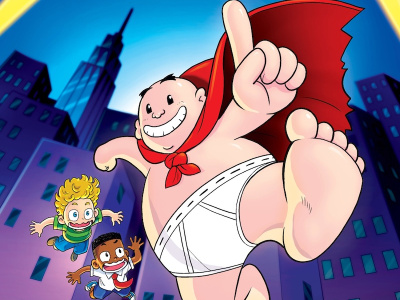Marvel President Bill Jemas' defense of his no overprint policy (see 'Marvel's Jemas Explains No Overprint Policy') has fed the continuing discussion over the future of the comics business. While all concerned have the same goal -- the growth of the market -- the views on how to accomplish that could not be more different. On one side, there are retailers who favor selling comics as entertainment, who prefer trade paperback packaging to periodical packaging, and who believe that if there's demand for editorial material that publishers should continue to print until it's satisfied. On the other side are retailers who look at comics as collectibles, who prefer the periodical packaging from which the comic medium arose, and who believe that a comic sellout can be a good thing because it promotes the belief among fans that the products they buy have enduring collectible value and are worth accumulating for that reason in addition to their entertainment value. In between are those that believe there's a role for both formats, who think that editorial material should continue to be available for as long as there's demand for it but not necessarily in the same format, who believe that the road to hell is paved with products that were designed to be collectible instead of giving the purchaser entertainment value, but who acknowledge that the periodical format is made to sell out and that sometimes there will be more demand than supply.
As we've reported, Marvel is bucking major trends in fighting the seemingly inexorable decline of sales on the comic periodical format (see 'Top Comics Below 100,000,' and 'Sturm and Drang in the Comics Industry'). Those trends include the reinforcing trends of declining sales and increasing prices, the decline in single copy sales of periodicals in general, and the reduction in the number of outlets that carry them (both comic stores and newsstand outlets). For at least thirty years, Marvel has been the strongest comic publisher in the newsstand distribution channel, both in sell-throughs and circulations. It's now among the publishers that is most dependent on the comic periodical, having been slow to adapt to the new reality of expanding sales of trade paperbacks, expanding numbers of outlets that carry them, and the increasing numbers of purchasers that would rather buy a complete story than a serialized one that requires a wait between installments. While Marvel has made some positive steps recently, particularly with the Ultimate line and a general editorial rejuvenation, these distribution and packaging issues are at the heart of its struggle to continue its growth in publishing.
So here are some recent comments from those that sell comics. They do not align exactly with the three strands we outline above, but do represent three different looks at the issues. We start out by reprinting some comments from a couple of excellent columns by retailer Joe Field, who writes a regular column -- 'The Big Picture' -- in Comics and Games Retailer. From the December issue, where he describes how he felt when hearing Jemas tout the fast aftermarket appreciation of Ultimate Spider-man #1: 'I can't begin to tell you how sick it made me feel. I got flashbacks to the rightfully tarnished era of 1992-1994, when the Merry Marvel Marketing Society made creative content a very distant second to slick gimmickry.' And from the March issue, 'I passionately disagree with Marvel's latest tactics, to in essence try to manufacture collectibility from the top down in an effort to resuscitate disappointing sales.' Field also brings up an important issue to many retailers, which is that they believe that Marvel is trying to reach customers currently serviced by comic stores by other means, 'Jemas didn't hide that anyone who wants to read the under-serviced Marvel titles has other options besides comic book stores,' referring to the newsstand only Ultimate Marvel Magazine and putting the content from sold-out books on Marvel.com.
On the other side of things, here's an e-mail we received from Karvin Cheung which is very positive on Marvel's steps, and unabashedly in favor of promoting collectibility. 'As a VP/GM that has overseen operations in Canada's largest hobby distribution company in sportcards and gaming, ...this is the best decision that Marvel has made in years.... Never have we seen the demand on Marvel comics... like we have on the Ultimate series... Collectors are coming from everywhere, and many are rediscovering their passion for comics once again.
And here's a comment opposing Marvel's no overprint policy that we received from Ilan Strasser of Fat Moose Comics. He proposed a reasonable compromise between previous and current Marvel overprinting policies. 'By not doing any overprints beyond damages or mis-shipments, we leave no room for the consumer who, for one reason or another, found out about a title too late. And keep in mind, the retailers' ire is not directed at books with a reasonable history.... We should know how to order Uncanny X-Men or Bishop or Captain America to fill our store's needs; after all, we've been dealing with these titles for years. We just want you to show a little initiative in properly promoting, through the limited availability of additional copies, those projects you yourself are hyping to the mainstream, not-yet comic buyers out there. 5% overprint on just these titles won't kill you as the titles would be virtually guaranteed to sell out through reorder activity.'
So putting it all together, here's our advice to Marvel:
Support the comic stores that have been the bulk of your circulation, revenues and profits for at least a decade. The 5% overprint recommendation on outreach titles above is a good compromise and would show you're listening. And be willing to do the work it's going to take to gain comic retailers' trust.
Write off returnable newsstand-style distribution for standard comics, if not immediately then over a period of time -- your percentage sell-throughs there can't be any better than they were on the extras you were overprinting for comic stores, and are probably worse. Continue the search for an outreach product format that can take advantage of your strength there, but fuhgedaboutit as a major distribution channel. 'It's dead, Jim.'
Expand trade paperback production rapidly. Cutting your periodical overprints and putting those resources toward book publishing is a good idea if you collect and reprint sold-out material quickly, as well as maintaining a broad inventory of archive material in book format.
Expand book distribution in bookstores and other returnable channels. This may be a controversial recommendation among comic store owners, but these are the future recruiting grounds for hard-core fans. New readers certainly aren't going to find comics on the newsstand and there are too few comic stores to serve as the only way to expand sales. Bookstores, record stores, videogame stores and other specialty retailers that stock a limited trade paperback/graphic novel line as a sideline can reach millions of consumers that can potentially become the loyal repeat customers the industry needs. Those that go beyond casual purchasers will eventually find your most profitable channel -- the comic stores -- where they can find a full line and all of the ancillary products.







